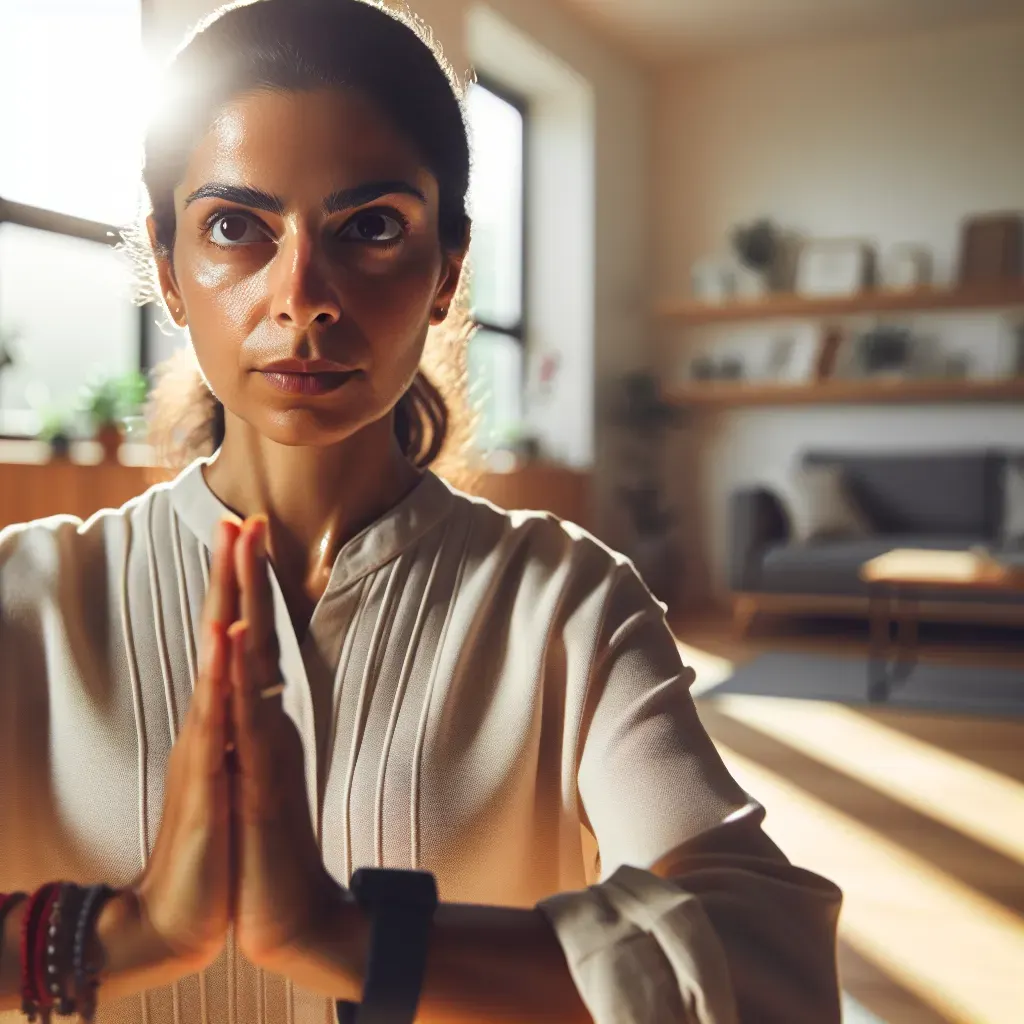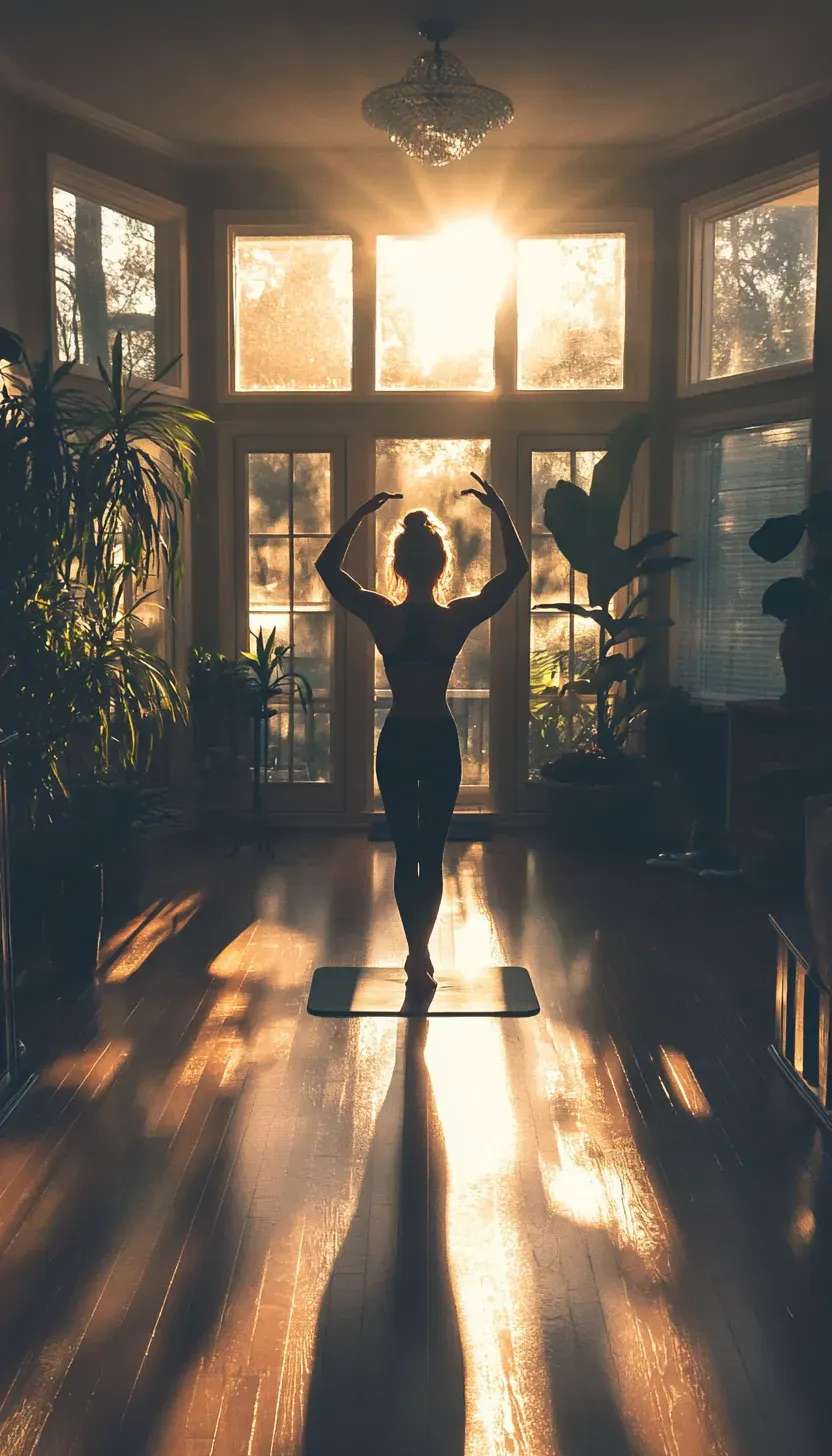Finding Balance: Incorporating Yin Yoga Elements into Your Vinyasa Routine
Table of Contents
- Introduction to Yin and Vinyasa Yoga
- Understanding the Principles of Yin Yoga
- Benefits of Combining Yin with Vinyasa
- Key Yin Poses to Integrate
- Transitioning Between Vinyasa and Yin
- Creating a Balanced Flow Sequence
- Mindfulness Practices in Your Routine
- Listening to Your Body’s Needs
- Embracing Balance in Practice
Introduction to Yin and Vinyasa Yoga
Yin and Vinyasa yoga, though distinct in their approaches, offer a harmonious balance that can enrich your practice. Yin yoga invites practitioners to slow down, emphasizing long-held, passive stretches that target the connective tissues and promote deep relaxation.
This meditative style encourages introspection, allowing you to explore your body’s sensations and your mind’s thoughts without the usual distractions of a fast-paced world.
Each pose is an opportunity to cultivate patience and presence, creating a profound sense of inner peace.
In contrast, Vinyasa yoga embodies a dynamic flow, where breath synchronizes with movement, energizing both body and spirit. This style fosters strength and flexibility while igniting the heart rate, making each session feel like a dance.
By incorporating Yin elements into your Vinyasa routine, you create a more holistic experience that balances the intensity of flowing sequences with restorative pauses.
Imagine transitioning from a vigorous sun salutation to a gentle, lingering hold in a deep stretch. This interplay not only enhances physical benefits but also nurtures emotional resilience, grounding your practice in both vitality and tranquility.
Understanding the Principles of Yin Yoga
Yin Yoga operates on the premise that stillness and surrender can lead to profound transformation. Unlike the dynamic movements of Vinyasa, Yin invites practitioners to hold postures for extended periods, typically three to five minutes.
This approach allows for deep tissue stretching and a meditative state, offering an opportunity to explore both physical and emotional landscapes.
By targeting the fascia and connective tissues, Yin encourages the release of tension and the restoration of energy flow, creating a harmonious balance within the body.
Moreover, the philosophy of Yin Yoga emphasizes mindfulness and introspection. Each pose becomes a doorway to self-discovery, urging practitioners to listen to their bodies and cultivate awareness of their breath and sensations.
This deeper connection fosters a sense of acceptance and compassion towards oneself, essential qualities that can enhance any Vinyasa practice.
By integrating moments of stillness into your flow, you can cultivate resilience and patience that not only enrich your yoga journey but also resonate throughout daily life.
Embracing these principles allows you to create a more holistic routine that nurtures both body and mind, ultimately leading to a more balanced existence.
Benefits of Combining Yin with Vinyasa
Combining Yin with Vinyasa creates a harmonious interplay between movement and stillness, allowing practitioners to experience the best of both worlds.
While Vinyasa flows energize and invigorate the body through dynamic sequences, integrating Yin elements introduces a profound sense of grounding and introspection.
This unique fusion not only enhances physical flexibility but also encourages emotional release, as the longer-held poses in Yin invite practitioners to explore deeper layers of tension and stress.
Moreover, the meditative quality of Yin complements the often fast-paced nature of Vinyasa, providing a sanctuary for the mind to settle amidst the flow.
This balance cultivates a heightened awareness of breath and body, fostering a more mindful practice that transcends the mat.
As students alternate between the energetic bursts of Vinyasa and the restorative pauses of Yin, they learn to navigate life’s ebbs and flows with grace, cultivating resilience both on and off the mat.
Ultimately, this blend invites a deeper connection to oneself, promoting holistic well-being that nourishes the spirit while energizing the body.
Key Yin Poses to Integrate
Integrating key Yin poses into your Vinyasa routine can create a profound sense of balance, allowing you to cultivate both strength and stillness.
One powerful pose to incorporate is the Caterpillar. This forward bend encourages introspection, inviting you to surrender into the pose while fostering deep release in the spine and hamstrings.
As you hold this position, let go of the habitual rush often associated with Vinyasa flows, allowing space for emotional release and mental clarity.
Another essential Yin pose is Supported Bridge. By using props like blocks or bolsters, you can elevate your experience, opening the heart while grounding your energy.
This gentle backbend not only encourages a sense of safety but also nurtures emotional healing, enhancing the fluidity of your Vinyasa practice.
Finally, consider adding Dragon to your sequence; its deep lunge stretches the hips and groin, areas often tight from dynamic flows.
As you linger in this pose, visualize melting away tension, creating a seamless transition back into your more vigorous movements.
Integrating these Yin elements not only enriches your practice but also empowers a deeper connection to your body and breath.
Transitioning Between Vinyasa and Yin
Transitioning between Vinyasa and Yin offers a unique opportunity to explore the dynamic interplay of movement and stillness.
As you flow through your Vinyasa sequences, each breath and pose becomes a celebration of energy and rhythm.
However, as you begin to weave in Yin elements, consider this transition not merely as a shift in pace but as an invitation to deepen your awareness.
The fluidity of Vinyasa can warm and energize the body, creating the perfect canvas for the introspective qualities of Yin.
When you pause in a Yin posture, allow yourself to fully embrace the quietude that follows the vibrancy of your practice.
This contrast can cultivate a profound sense of balance as you learn to appreciate both the exhilaration of movement and the restorative power of stillness.
Visualize each transition as a dance one where you honor both the spirited flow of Vinyasa and the gentle embrace of Yin.
In this space, you not only foster physical flexibility but also nurture emotional resilience, creating a holistic practice that resonates on multiple levels.
Embrace the beauty in this duality; it’s within these transitions that you may find your truest self.
Creating a Balanced Flow Sequence
Creating a balanced flow sequence involves weaving together the dynamic energy of Vinyasa with the calming essence of Yin, fostering a harmonious practice that nurtures both strength and stillness.
Begin by identifying key poses that resonate with your body, allowing for a natural transition between invigorating flows and restorative holds.
For instance, after a series of Sun Salutations that elevate your heart rate, consider transitioning into a gentle forward fold or a seated twist to invite introspection and grounding.
Incorporating longer holds in the Yin style can deepen your connection to each pose, enabling you to explore the subtleties of breath and sensation.
As you hold poses like Dragon or Butterfly, encourage mindfulness and the release of tension, inviting students to surrender to gravity and their inner rhythms.
This intentional interplay not only cultivates physical flexibility but also fosters emotional resilience, leaving practitioners feeling balanced and rejuvenated as they move through the flow.
Ultimately, a well-crafted sequence should inspire a dialogue between effort and ease, empowering individuals to discover their unique path to equilibrium on the mat.
Mindfulness Practices in Your Routine
Incorporating mindfulness practices into your daily routine can transform not only your yoga practice but also the way you approach life’s challenges. Start by setting aside a few moments each day for conscious breathing. This simple yet profound exercise anchors you in the present, allowing you to release tension and cultivate awareness. As you transition between poses in your Vinyasa flow, synchronize your breath with movement, creating a fluid rhythm that mirrors the ebb and flow of life itself.
Moreover, consider integrating mindful pauses throughout your day. Whether it’s during a hectic work meeting or while enjoying a meal, take a moment to check in with your thoughts and emotions.
These brief intervals of reflection can foster a deeper connection with your inner self, enhancing your overall sense of balance.
Embracing the Yin elements of stillness amidst the dynamic nature of Vinyasa not only enriches your practice but encourages a holistic approach to wellness that permeates every aspect of your life.
Listening to Your Body’s Needs
Listening to your body’s needs is an essential practice that transcends the mat, offering a deeper connection to your physical and emotional self.
In the dance of Vinyasa, where movement flows with breath, it’s easy to get caught up in the rhythm and lose sight of what your body is truly communicating.
By incorporating Yin Yoga elements, you create a space for introspection, allowing stillness to reveal areas of tension and imbalance.
This pause encourages you to tune into sensations, transforming your practice from mere exercise into a conversation with your body.
As you transition between dynamic sequences, take a moment to check in with yourself.
Ask, “What does my body need right now?” It might be a gentle backbend to release accumulated stress or a restorative forward fold to surrender and let go.
Embracing these moments of inquiry not only enhances your physical practice but also cultivates mindfulness that extends beyond the studio.
By honoring your body's signals, you foster resilience and adaptability, key components in achieving balance both on and off the mat. Remember, every practice is unique; trust that your body knows the way.
Embracing Balance in Practice
Embracing balance in practice goes beyond the physical postures; it invites a deeper awareness of our inner landscape.
By integrating Yin Yoga elements into your Vinyasa routine, you create a harmonious dialogue between effort and ease.
This duality encourages practitioners to explore not only their strength but also their capacity for stillness, fostering a space where the body can release tension and the mind can find clarity.
Incorporating longer-held poses from Yin Yoga allows for introspection, giving the body time to soften and adapt.
This pause amidst the dynamic flow of Vinyasa cultivates a sense of mindfulness that extends beyond the mat.
As you flow through sun salutations, consider weaving in moments of stillness, perhaps a gentle forward fold or a supported bridge pose where you can reflect on your breath and sensations.
This practice of balancing movement with stillness can illuminate the interconnectedness of all things, reminding us that true strength lies not just in the ability to push forward but in knowing when to yield and simply be.
People Also Asked
Q1: What is Yin Yoga?
A meditative yoga style focused on long-held, passive stretches targeting deep connective tissues.
Q2: What is Vinyasa Yoga?
A dynamic, breath-synchronized flow that builds strength, heat, and flexibility.
Q3: Can you mix Yin and Vinyasa yoga in one session?
Yes. Combining them balances energy and rest, enhancing physical and emotional well-being.
Q4: What are the benefits of combining Yin with Vinyasa?
It improves flexibility, reduces stress, and promotes mindfulness.
Q5: When should you add Yin yoga in your flow?
Post-peak sequences or at the end of class for cooldown and introspection.
Q6: What Yin poses work well in Vinyasa routines?
Caterpillar, Supported Bridge, and Dragon are effective for integration.
Q7: How long should you hold Yin poses?
Usually 3 to 5 minutes, focusing on deep release and breath awareness.
Q8: Is Yin Yoga good for beginners?
Yes. It’s accessible and helps develop body awareness and patience.
Q9: How often should I mix Yin and Vinyasa?
1–2 times per week can help balance active and passive work.
Q10: Does Yin Yoga improve emotional health?
Yes. It encourages stillness, release, and mental clarity.





